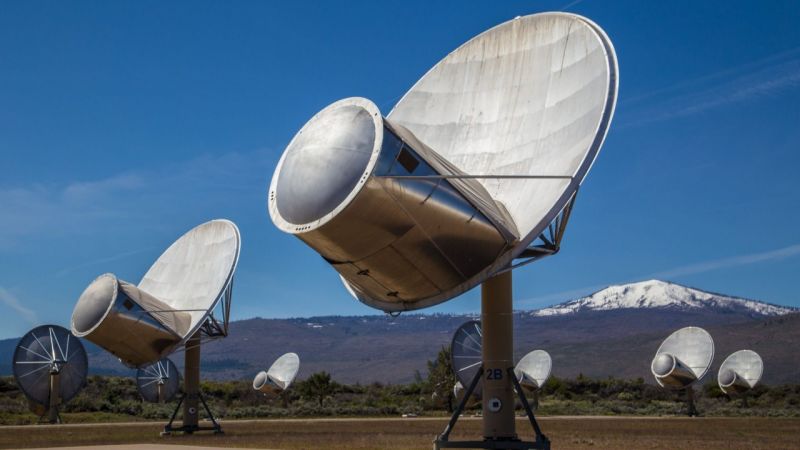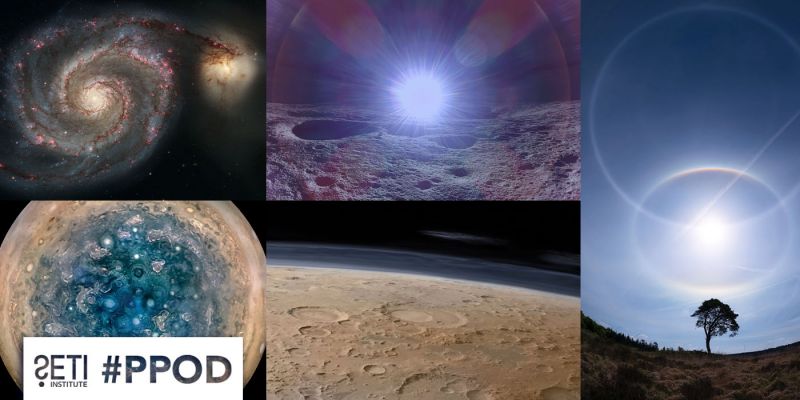
One of humanity’s most profound questions is whether life exists beyond Earth — and if so, what forms it might take. For decades, the search for life has often focused on finding conditions similar to early Earth, assuming life must follow a carbon-based blueprint.
SETI Institute’s communications specialist, Beth Johnson, along with Dr. Betül Kaçar, discussed her team's recent research on exploring a "cookbook of life." This work challenges conventional assumptions about the origin of life, suggesting that life might be inevitable under the right chemistry rather than a rare and exceptional event.
Dr. Betül Kaçar, an astrobiologist at the University of Wisconsin-Madison, leads the Kaçar Lab, where biology meets astrobiology. Her team takes a unique, interdisciplinary approach—combining biology, chemistry, computing, and bioinformatics—to explore how life began. By studying modern organisms and recreating early Earth-like conditions in the lab, they are uncovering clues about how life may have emerged and whether alternative paths could exist.
The Intricacy of Origins
Understanding how life began is one of science’s biggest challenges. Even the simplest living cell is more complex than any machine ever built. And yet, on early Earth, life emerged from basic ingredients like rocks, water, and gases in the atmosphere.
This isn’t merely a chemistry problem. It spans biology, geology, physics, and more. It forces us to rethink core assumptions. For example, although all known life is carbon-based, carbon may not have been required for life to begin.
We’ve made progress. In labs, researchers have synthesized many of the molecules needed for life. But getting those molecules to behave like life—interacting, changing, and evolving—is more difficult. That’s where evolutionary biology comes in, helping scientists explore how lifeless chemicals may have taken the first steps toward life.
As Dr. Kaçar explains, scientists have become adept at creating life’s building blocks, but these components don’t yet exhibit behaviors we would call “alive.” To bridge the gap, she says, we must “put life into the origins of life” by applying lessons from evolution. That means studying not just molecules, but how they interact and adapt as living systems.
A Chemical Discovery That Broadens the Horizon
Dr. Kaçar's lab identified over 270 different reaction sets that form self-sustaining and self-amplifying chemical reaction networks. What makes this particularly significant is that they are composed entirely of inorganic components.
This discovery directly challenges the prevailing search for life, which has largely focused on Earth's carbon-based model. By exploring diverse chemistries and environments, this research expands the scope of what lifelike systems might look like. It shows that self-sustaining behaviors could emerge using entirely different elements, suggesting that life might not be limited to Earth-like biochemistry.
Framing Life's Components: The "Bar Stool" Metaphor
To better understand the essential components needed for life, Dr. Kaçar uses the "bar stool" analogy. In this view, life is supported by three fundamental legs:
- Metabolism: How life processes and converts resources; in her words, “life has to eat and life has to poop"
- Informatics: A system to manage those metabolic processes
- Compartment: A boundary or structure (such as a cell membrane) that houses metabolism and information flow
While these concepts have historical precedent, such as Gánti’s Chemoton model, researchers often study them in isolation. Dr. Kaçar's work aims to explore these elements as an emerging phenomenon, recognizing that they may only function fully when considered together. Her lab investigates each component through targeted experiments while emphasizing its collective behavior.
The Chemistry Driving Self-Sustaining Networks
At the heart of these self-sustaining networks are two key chemical mechanisms:
- Autocatalysis: A feedback loop where products of a reaction catalyze the production of their starting materials. Think of it like a party where each guest you invite brings more guests, making the gathering grow exponentially.
- Comproportionation: A reaction type that equalizes oxidation states between different molecules. Unlike disproportionation, which distributes elements unevenly, comproportionation promotes balance, enabling stage propagation across many cycles.
These mechanisms can create autocatalytic cycles that sustain themselves using a range of elements, including sulfur and boron, raising the possibility that early life did not necessarily begin with carbon-based chemistry, but instead integrated carbon later, offering a broader framework for how and where life might emerge elsewhere in the cosmos.
Addressing the Unknowns
This research also raises and touches several key questions in origin-of-life studies:
- Are we missing a crucial ingredient that existed on early Earth but has since disappeared?
- Could inorganic chemistries offer viable alternatives to organic systems?
- How can these findings inform sustainable chemistry, synthetic ecology, and biosynthetic manufacturing?
Additionally, this research underscores the importance of considering the environment in which life might arise. Rather than focusing on surfaces or even subsurfaces, the key insight is that stability matters, and stability is shaped by a system’s environment.
Earth itself serves as a reminder. With only one known planetary example of life, what scientists call N = 1, we often overlook how much Earth has changed. The planet has passed through “alien phases,” and life from three billion years ago may have been so different that it borders on alien to us today. Studying these transitions helps scientists explore extreme planetary conditions and reframe the boundaries of what is considered habitable.
Looking Ahead
With over 270 potential pathways identified, Dr. Kaçar’s team is actively testing these systems. As an experiment-based lab, they continue to investigate how different reactions behave under various conditions. They also collaborate with NASA’s LIFE initiative, which explores how early cells transitioned to multicellularity.
This work represents transformative steps in the search for life. By expanding the Cookbook of Life, Dr. Kaçar and her team are not only shedding light on Earth’s distant past but also widening the horizon for discovering life across the universe.
To learn more, check out the research paper, watch the video below, or find A Cookbook of Life: How Chemistry Might Explain Life on Other Planets on our YouTube channel.





